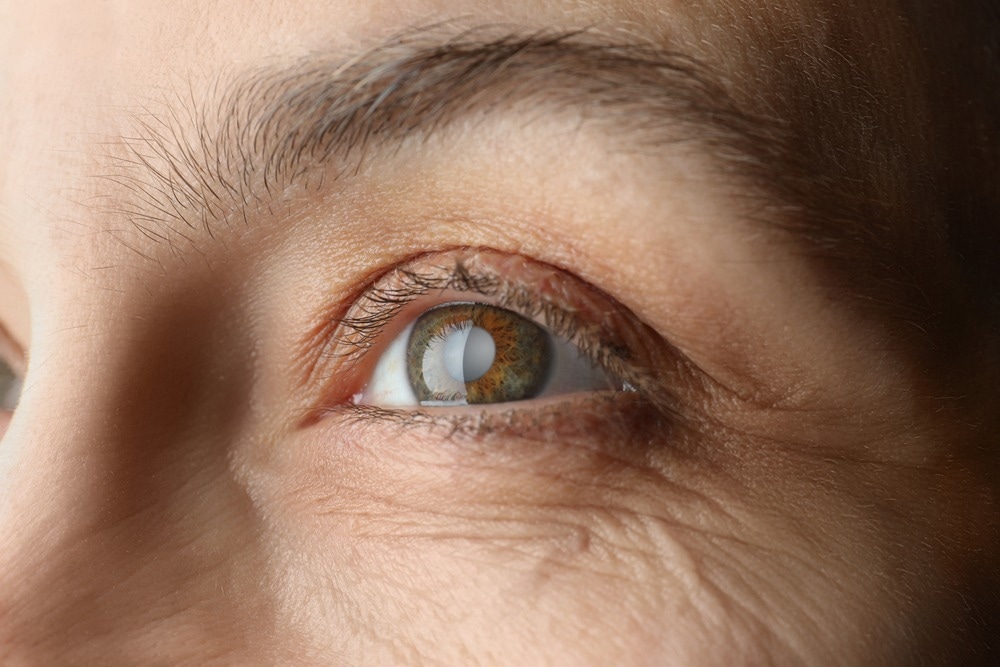Insufficient lateral sampling in clinical practice causes wide-field retinal optical coherence tomography angiography (OCTA) to experience low image resolution. A study published recently in the journal Biomedical Signal Processing and Control proposes a novel deep-learning-based super-resolution angiogram reconstruction generative adversarial network (SAR-GAN) for en-face OCTA image enhancement.
 Study: Image enhancement of wide-field retinal optical coherence tomography angiography by super-resolution angiogram reconstruction generative adversarial network. Image Credit: New Africa/Shutterstock.com
Study: Image enhancement of wide-field retinal optical coherence tomography angiography by super-resolution angiogram reconstruction generative adversarial network. Image Credit: New Africa/Shutterstock.com
Optical Coherence Tomography Angiography: What is It?
Optical coherence tomography angiography does not require dye injection to visualize sensitive vascular and has been utilized in detecting various ophthalmic diseases, including retinal vascular occlusion, age-related macular degeneration, glaucoma and diabetic retinopathy.
Two critical factors for optical coherence tomography angiography are comfort and image quality. Comfort depends on acquisition time and the blink rate of the subject eye. On average, a regular subject blinks every 3.5 seconds; therefore, data acquisition must be under approximately five seconds for one OCTA measurement.
Improving Optical Coherence Tomography Angiography Image Quality
Optical coherence tomography angiography image quality helps diagnose many ophthalmic diseases.
Several image enhancement methods have been used to improve image quality, incorporating numerous factors such as resolution, motion artifacts, contrast, and flow sensitivity. In each method, one of both factors, i.e. image quality or data acquisition time, is compromised.
The ophthalmological specialists need high-quality images to detect tiny texture features and diagnose illness accurately. The optical coherence tomography angiography image's resolution may be divided into two separate classes, axial and lateral resolutions, based on the image's orientation. Digital sampling and optical design impact these resolutions in the optical coherence tomography angiography system.
It is possible to increase the axial resolution of optical coherence tomography through digital sampling and spectral detection by using an extended broadband super luminescent diode (SLD) or super continuous light source since it mainly depends on spectral bandwidth and center wavelength of the light source.
The lateral resolution of optical coherence tomography depends on digital sampling density and optical point spread function (PSF).
The optical PSF cannot image subcellular and cellular structures due to low numerical aperture and diffraction limitations. Therefore, several designs and methods such as virtually structured detection, adoptive optics and achromatizing eye lens are used to improve lateral resolution. However, the drawbacks of these techniques, such as extended acquisition time, restricted field of view, and high cost, make them unsuitable for clinical ophthalmological diagnosis.
Why is Super-Resolution (SR) Image Reconstruction Important?
With the introduction of deep learning in the optical coherence tomography field, many advancements have been achieved in retinal disease classification, avascular area detection, and retinal layer segmentation.
Super-resolution image reconstruction that helps recover high-resolution (HR) images from low-resolution (LR) images is significant in image processing. Deep-learning methods have proven beneficial for high-resolution image reconstruction in several fields such as medical and biological imaging, satellite imaging, surveillance and image recovery.
Enhancing OCTA En-Face Image Quality Using SAR-GAN
Numerous studies have proposed several methods for optical coherence tomography image processing investigations.
These super-resolution methods improve cross-sectional structural OCT images, and only a few studies used deep learning methods to rebuild an HR-OCTA en face image. A deep-learning-based technique was needed to achieve super-resolution results for wide-field OCTA en-face images. This study focused on creating a robust deep-learning-based approach named super-resolution angiogram reconstruction GAN (SAR-GAN).
An SD-OCT system was used for collecting large optical coherence tomography angiography data for human retina vascular visualization.
This data was then preprocessed for generating HR and LR images for network training. A well-trained SAR-GAN was built by carefully optimizing using a model assessment and parameter adjustment to improve picture quality for wide-field OCTA.
To evaluate how effectively this SAR-GAN algorithm works, it was fed with LR photos with a 2x scaling factor to generate SR images. Finally, the advantages of this approach were observed by comparing the image performance of SAR-GAN to that of several other image-enhancing techniques.
The Key Findings of the Study
Large field-of-views are challenging with most commercial OCTA systems, but this method brings us one step closer to achieving those goals. The robustness and versatility of SAR-GAN are demonstrated by the fact that it performs well in a variety of FOVs.
Deep learning-based approaches obtained significantly better results than traditional methods, such as bicubic interpolation and Gabor, for obtaining fine vascular features from HR images due to the powerful computing power and large amount of data utilized.
SAR-GAN obtained the best imaging performance compared to other deep-learning methods regarding vascular connectivity, CNR, and noise intensity.
The SAR-GAN technique has a promising future and great potential for promoting wide-field optical coherence tomography angiography imaging in clinical diagnosis due to its adequate processing time and computational resources.
Reference
Xing, Y. et al. (2022). Image enhancement of wide-field retinal optical coherence tomography angiography by super-resolution angiogram reconstruction generative adversarial network. Biomedical Signal Processing and Control. https://www.sciencedirect.com/science/article/pii/S1746809422004566
Disclaimer: The views expressed here are those of the author expressed in their private capacity and do not necessarily represent the views of AZoM.com Limited T/A AZoNetwork the owner and operator of this website. This disclaimer forms part of the Terms and conditions of use of this website.